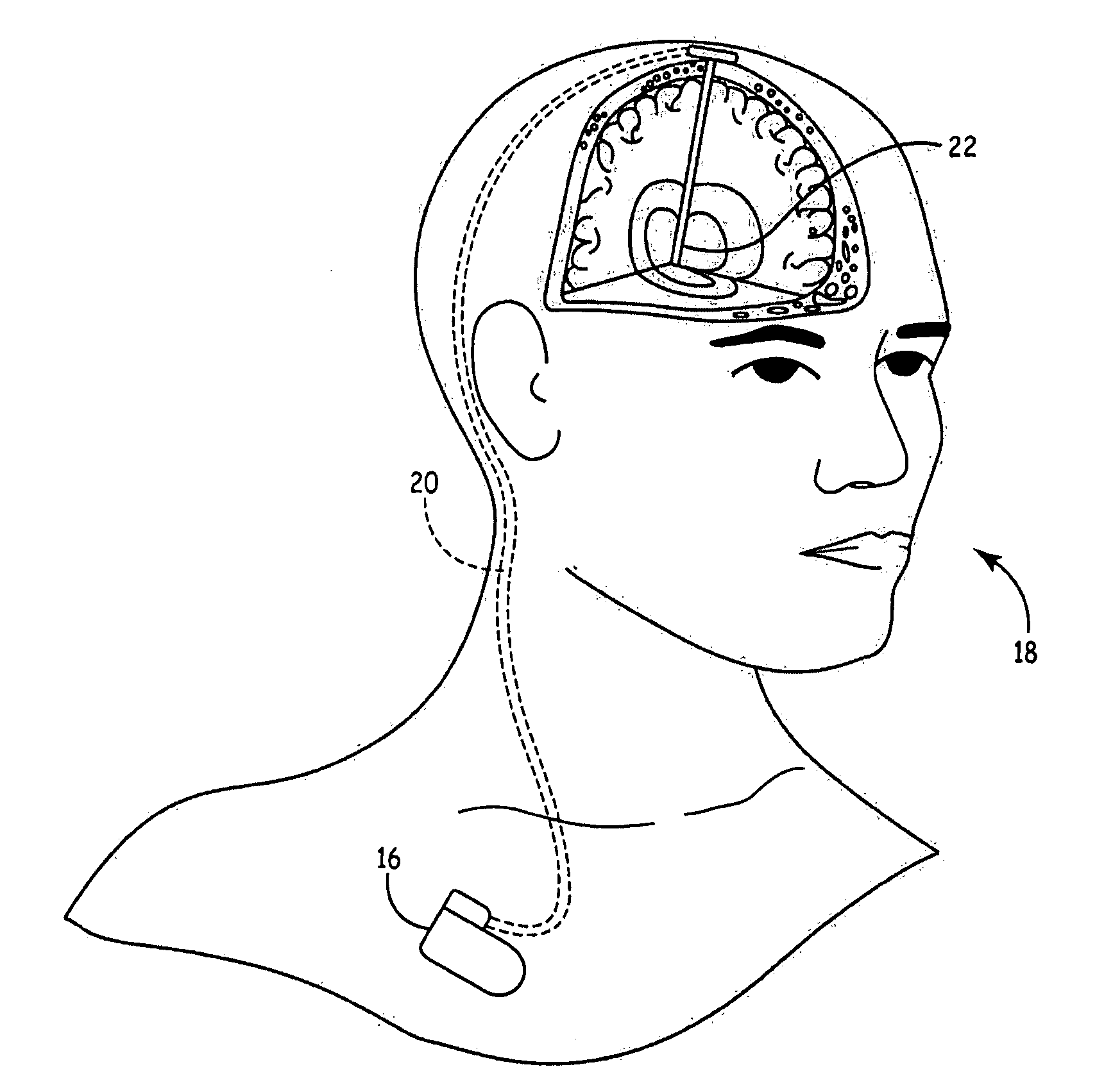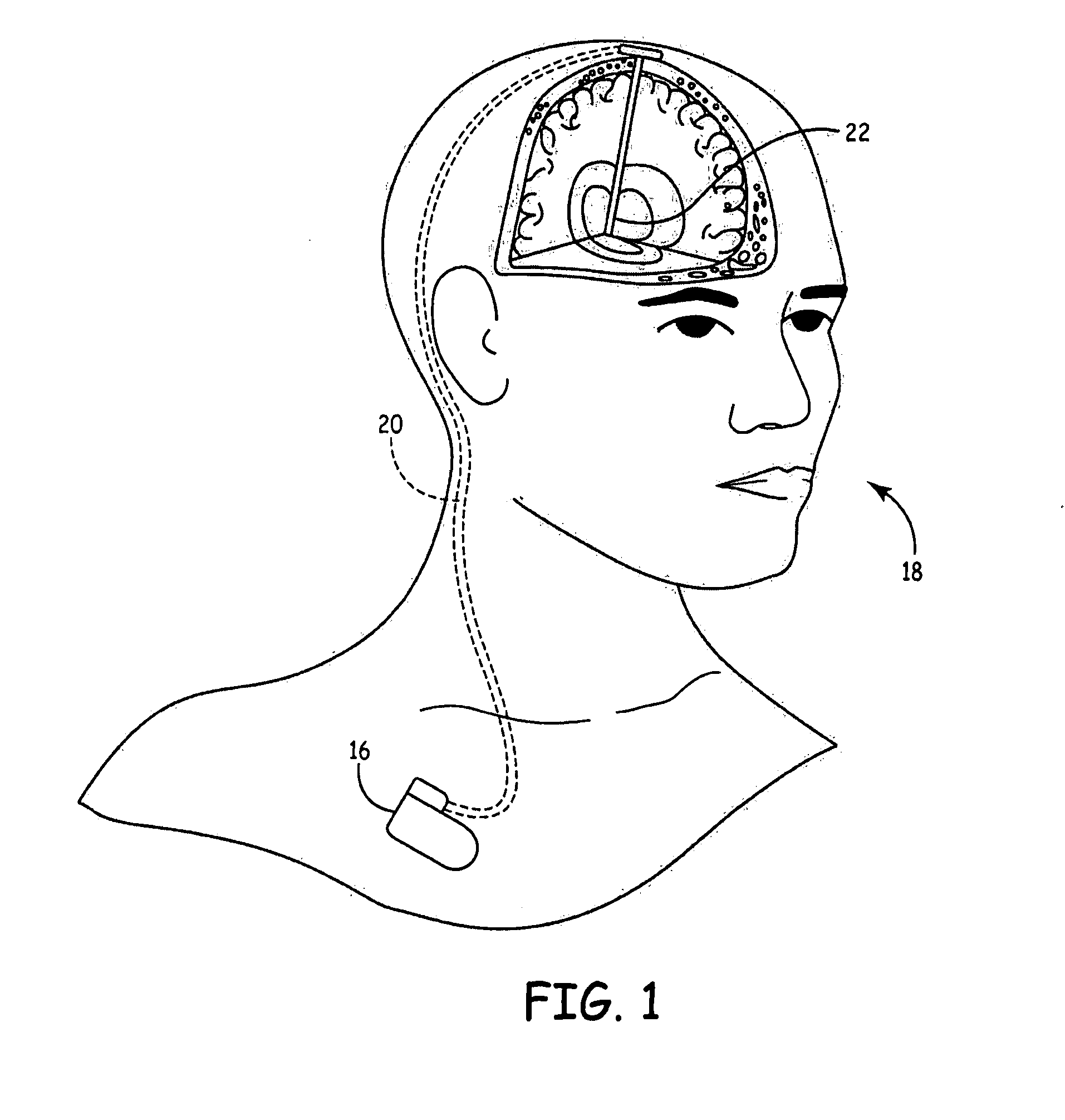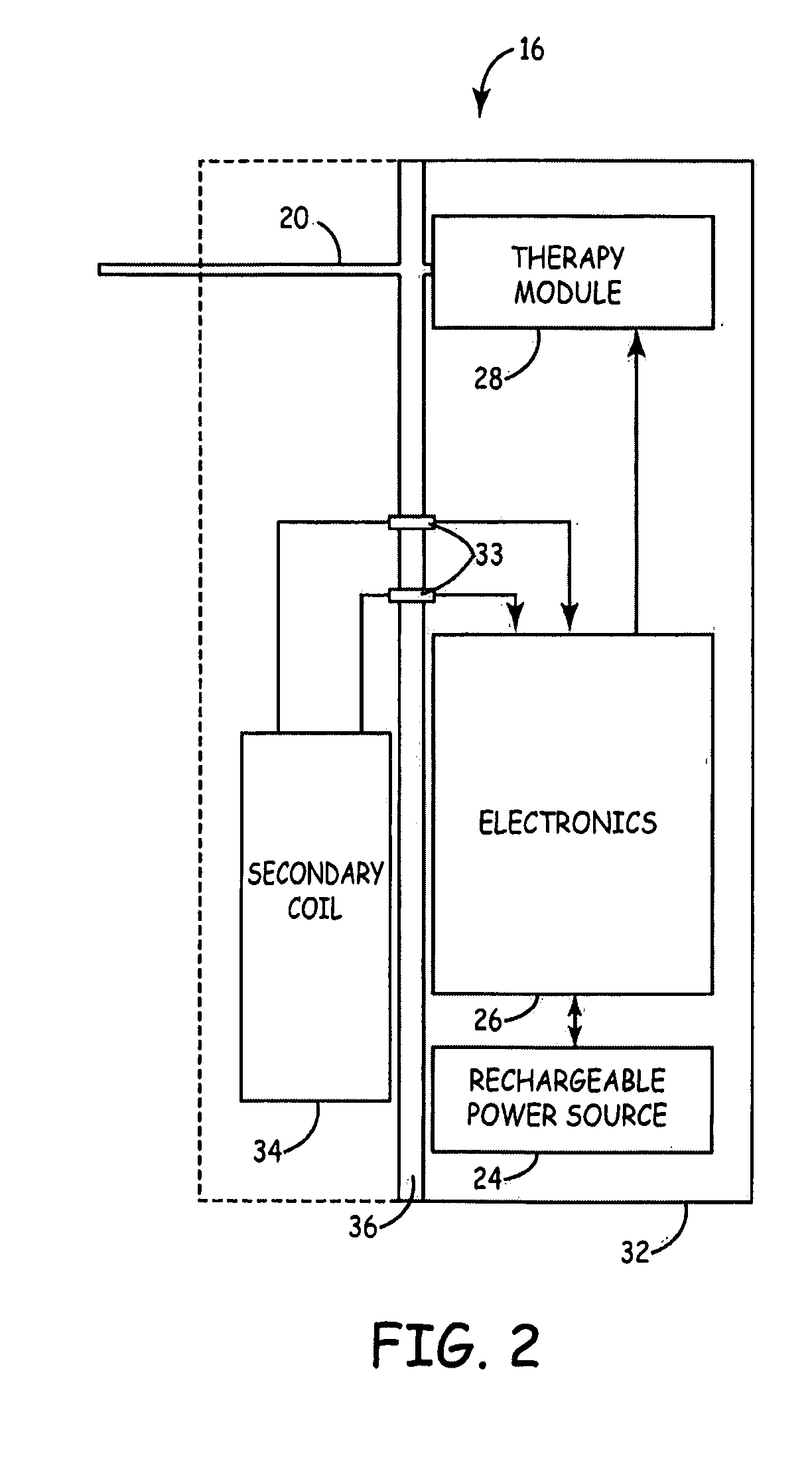Using telemetry coupling as a surrogate for recharger coupling
a recharger and telemetry technology, applied in the field of imds, can solve the problems of inconvenient continuous coupling of patients to external power sources, disadvantageous electrical wires perforating the skin, and single cell batteries usually do not supply the lasting power required
- Summary
- Abstract
- Description
- Claims
- Application Information
AI Technical Summary
Benefits of technology
Problems solved by technology
Method used
Image
Examples
Embodiment Construction
[0041]FIG. 1 shows an exemplary IMD 16, which may be a neurostimulator, implanted in patient 18. IMD 16 can be any of a number of medical devices such as an implantable therapeutic substance delivery device, implantable drug pump, cardiac pacemaker, cardioverter or defibrillator, a device to delivery electrical stimulation pulses for a neurological or muscular condition or to alleviate pain, or any other IMD for delivering therapy.
[0042]The IMD 16 is typically implanted by a surgeon in a sterile surgical procedure performed under local, regional, or general anesthesia. One or more therapy connections 20 such as leads or catheters are typically implanted with a distal end positioned at a desired therapeutic delivery site 22. In the exemplary embodiment, a proximal end of a therapy connection 20 may be tunneled under the skin to the location where IMD 16 is to be implanted.
[0043]FIG. 2 is a block diagram of one embodiment of IMD 16. In FIG. 2, IMD 16 includes a rechargeable power sour...
PUM
 Login to View More
Login to View More Abstract
Description
Claims
Application Information
 Login to View More
Login to View More - R&D
- Intellectual Property
- Life Sciences
- Materials
- Tech Scout
- Unparalleled Data Quality
- Higher Quality Content
- 60% Fewer Hallucinations
Browse by: Latest US Patents, China's latest patents, Technical Efficacy Thesaurus, Application Domain, Technology Topic, Popular Technical Reports.
© 2025 PatSnap. All rights reserved.Legal|Privacy policy|Modern Slavery Act Transparency Statement|Sitemap|About US| Contact US: help@patsnap.com



